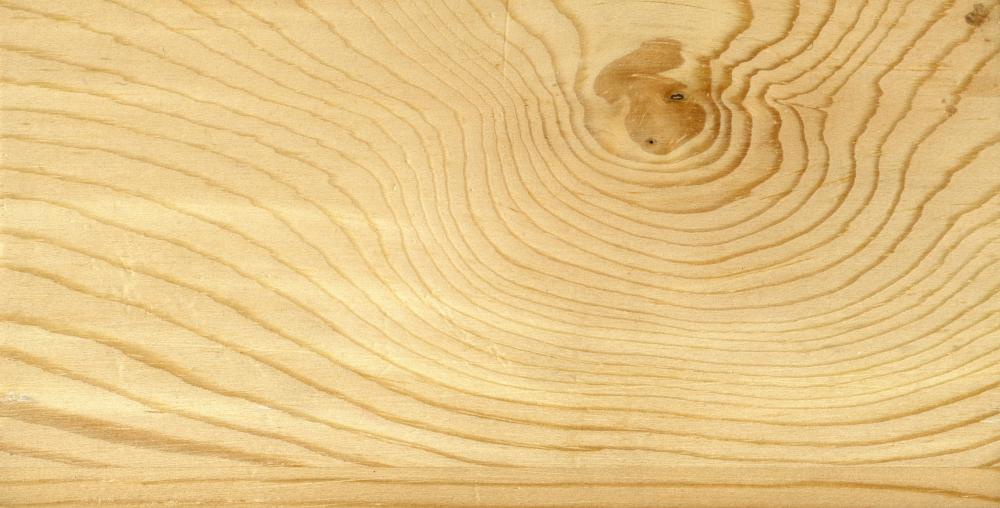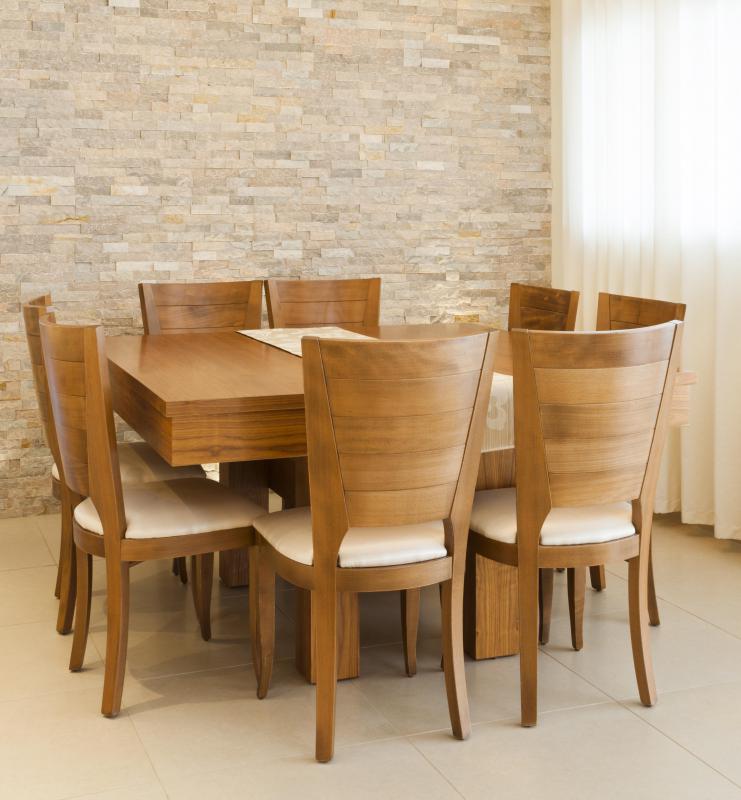At HomeQuestionsAnswered, we're committed to delivering accurate, trustworthy information. Our expert-authored content is rigorously fact-checked and sourced from credible authorities. Discover how we uphold the highest standards in providing you with reliable knowledge.
What is Wood Veneer?
Wood veneer is used to give furniture or other materials a fine wood grain appearance. It is also used to make plywood, which consists of thin layers of veneer glued together. Wood veneer comes in very thin sheets, less than 3 mm thick, and is made of various types of finished or unfinished wood.
This material is often used on common or less valuable materials to give them a superficially attractive appearance. It's also used for cabinet remodeling, since it's easier than replacing functional but unattractive kitchen cabinets entirely. Wood veneer is also used for parquet floors. Wooden products that have large surfaces may have a veneer to avoid the great costs associated with making large items entirely of solid wood.
Some people also use wood veneer can be used in craft projects. It is used on speaker coverings and luxury car interiors. Its various creative uses are limited only by the imagination.

Wood veneer can be made from the wood of various species of trees. It is often made from species such as cherry, oak, maple and birch, as well as rare and exotic species such as Brazilian rosewood and eucalyptus. There are hundreds of different types of veneers available. When applied properly, wood veneer gives a piece the illusion that is made entirely from the same type of wood as the veneer.

Most of the time, veneers are applied with an adhesive such as carpenter’s glue, using a specialized roller and clamps to hold the veneer in place while drying. The choice of adhesive should depend on the experience of the person doing the applying, since some adhesives are so strong that they do not allow for any mistakes. Wood veneer should also be applied only to flat surfaces, because it doesn’t adhere neatly to curves.

Most finished veneer comes with a paper backing which eases the application process. Raw wood veneer may or may not be finished, and it does not adhere as easily as paper backed veneer. It is also more likely to allow the adhesive to seep through to the surface, giving the veneer a warped or stained appearance.
AS FEATURED ON:
AS FEATURED ON:














Discussion Comments
Why does the FDA in the USA not allow products made using veneer to be imported?
Can veneer be considered to be wood or is it a product of wood? Where can I find literature on this subject?
do you know of any company/factory that deals in wood Veneer business? The thickness of the wood veneer will be 0.6 mm.
do you know of any company/factory that deals in wood business and making of veneer? The thickness of the wood will be 2 mm.
can you please tell me a bit about the differences between veneer logs, saw logs, and rotary logs? thanks
how do i install a wood veneer wall?
if i was to use wood veneer on shelving in say a kitchen would the color differ from shelf to shelf or would the color remain constant? If it did change would this be dramatic?
how thin is wood veneer? is it 1/16" or is it thinner than that?
How is veneer made?
What is the difference between a veneer & the sunmica?
Rajesh Thamman
India
what is metal veneer
Post your comments